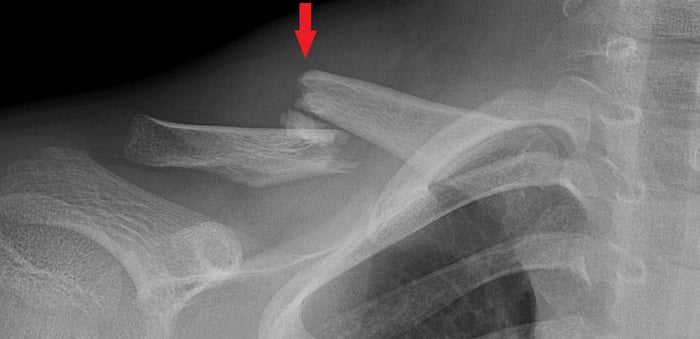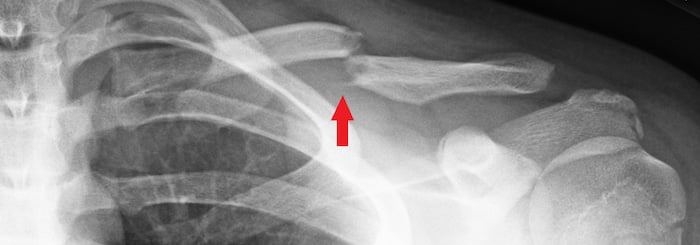Clavicle (Collarbone) Fractures
Fracture Treatment at Children’s Mercy
Clavicle (collarbone) fractures are one of the most common fractures in children. In young children, clavicle fractures do not typically require surgery due to the healing and remodeling (or reshaping) potential that allows for full range of motion of the shoulder.
Your child or teen may need surgery if they have an open fracture (the bone is protruding through the skin), injury to the nerves and blood vessels surrounding the clavicle, and/or significant displacement of the fracture. However, even a large amount of fracture displacement can usually heal without surgery, so surgery is rarely necessary for clavicle fractures.
Typical treatment for clavicle fractures includes a short course of immobilization to prevent shoulder motion for a few weeks followed by prolonged activity restrictions due to the risk of refracture. Options for immobilization include a sling (with or without a swath to wrap around the body and hold the sling closer to the body), a figure of eight brace or a shoulder immobilizer. If your child is an infant, sometimes a simple elastic bandage or safety pin can be used to connect the shirtsleeve to the chest and prevent shoulder movement.
Depending on the age of the child and specifics of the fracture, the difficulty with clavicle fractures is the prolonged risk for a repeat fracture. Your child will need to take extra care for three to 12 months after the time of the injury. Your health care team will discuss when it's safe to return to specific activities at your appointment.
Examples of clavicle fractures


